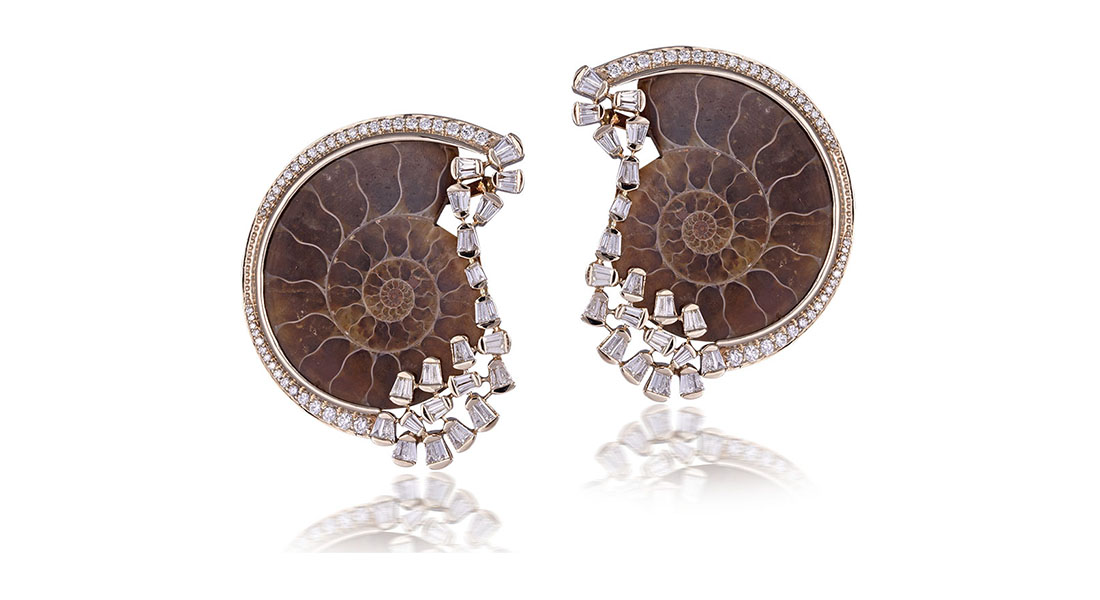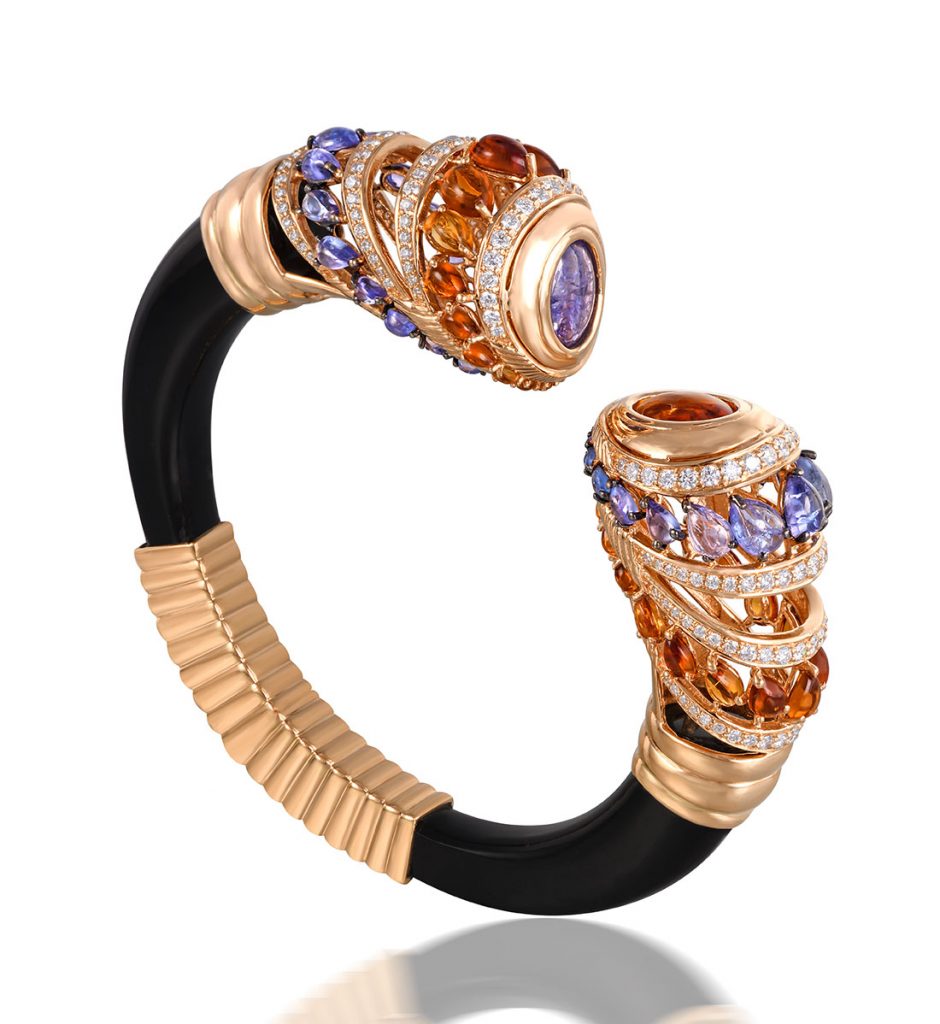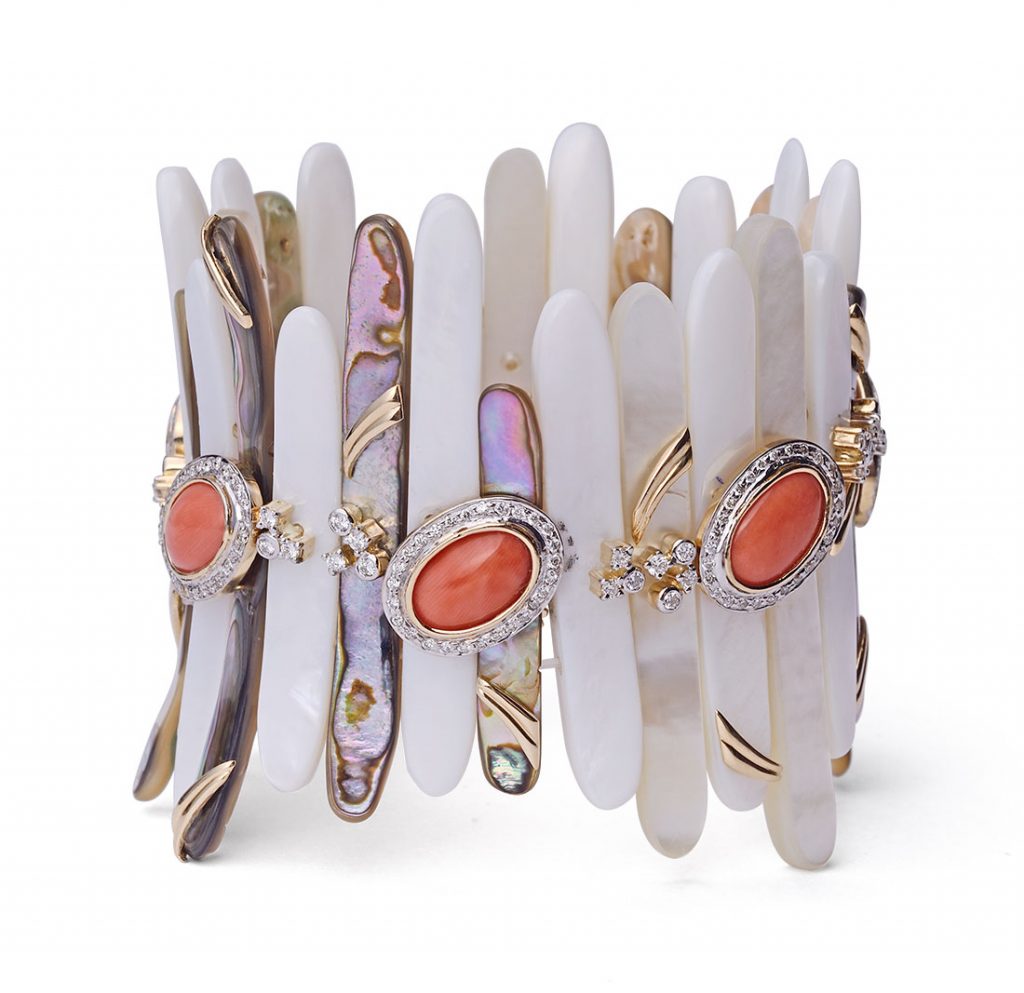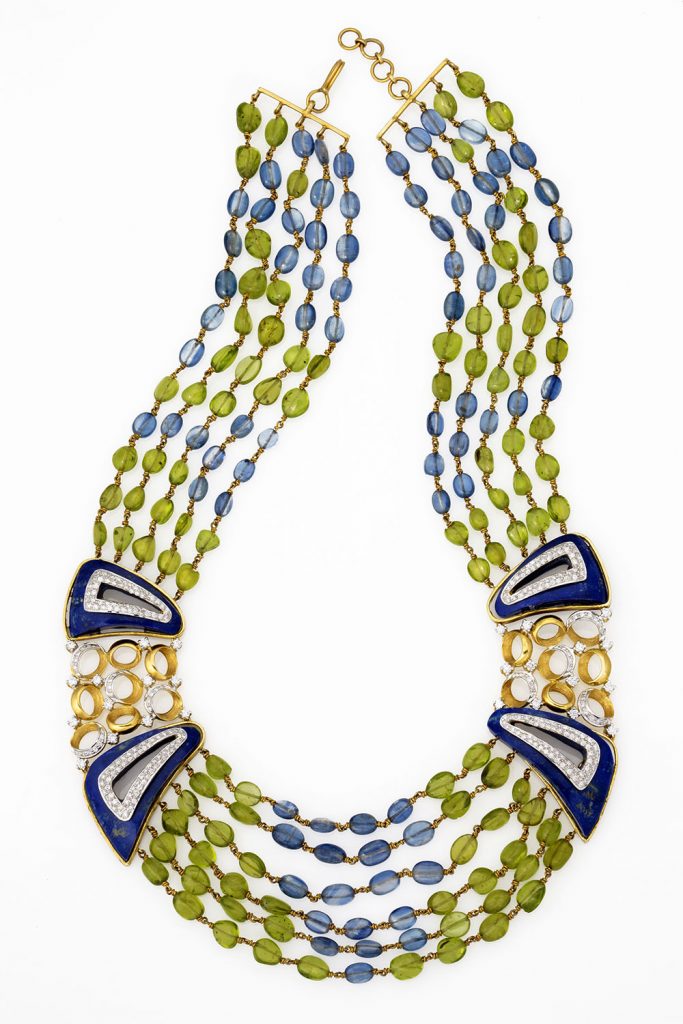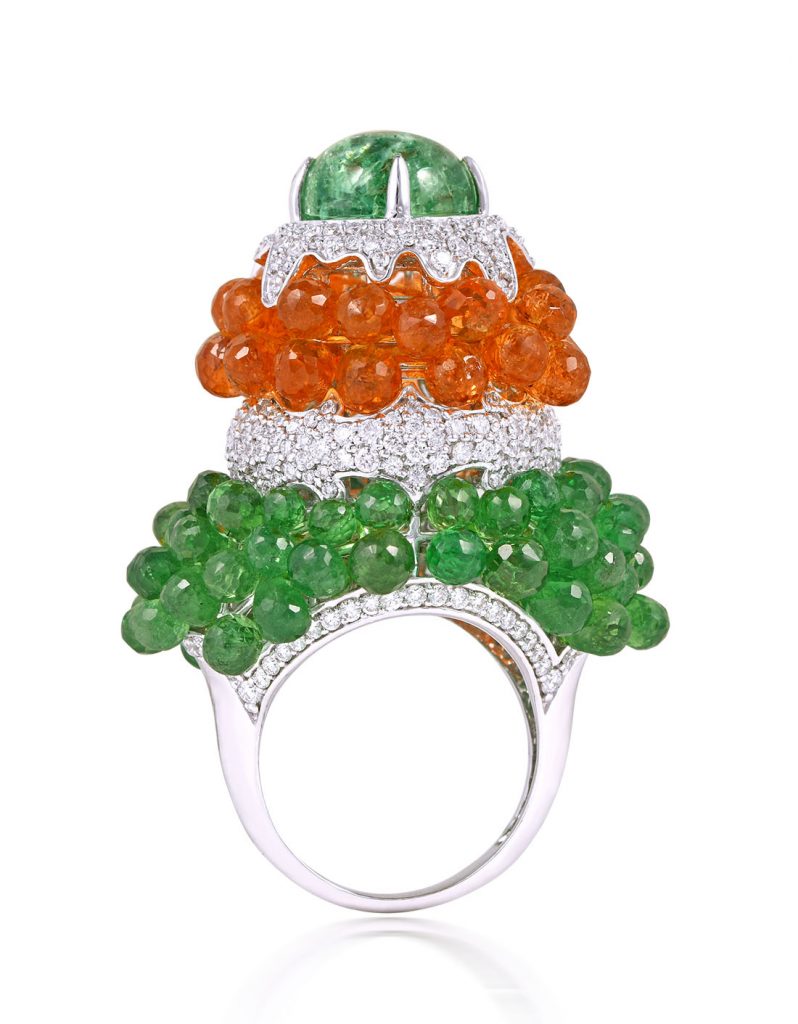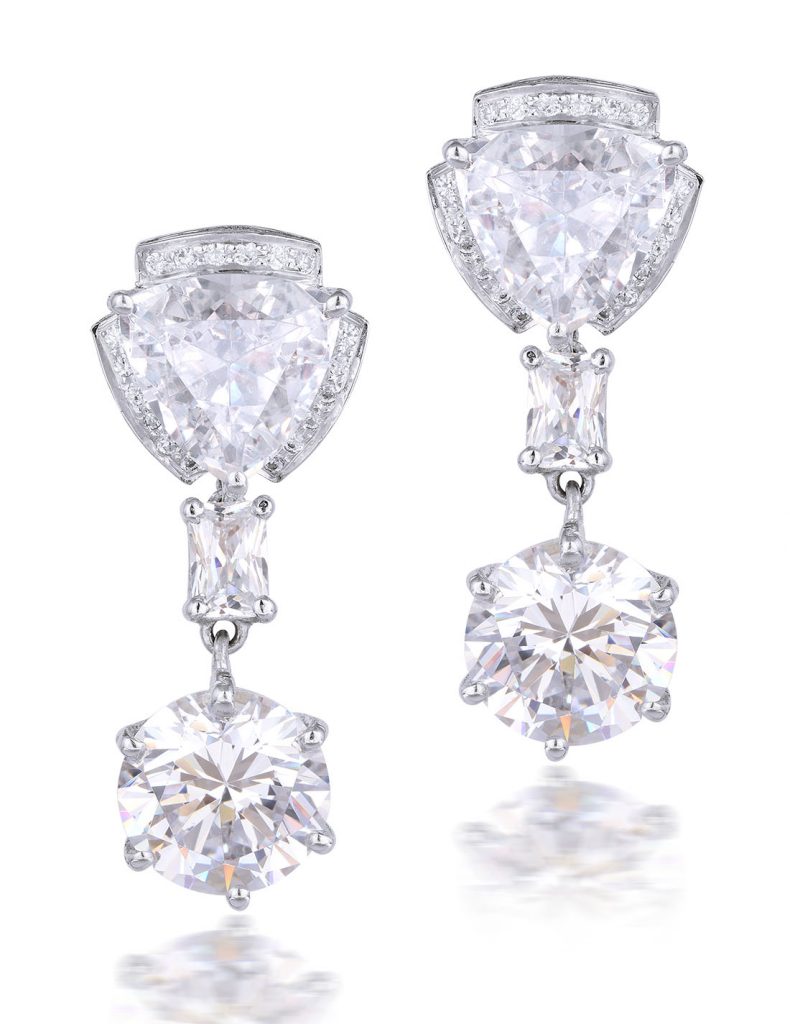HARSHAD AJOOMAL, jewellery designer and founder of H. Ajoomal Fine Jewellery, has always been way ahead of his times. An aficionado of art, architecture and jewellery history, he believes in having a steep learning curve. He references the past, but keenly follows the latest fashion trends, while his uber-chic creations define Indian avant-garde jewellery. Harshad has the knack to surprise his audience with his bejewelled, artistic works that transcend cultural boundaries. In an interview with Solitaire International, Harshad talks animatedly about his three-decade-long journey in the field of jewellery designing, and his latest collections that employ aluminium, titanium, meteorites and a host of custom-cut and rough gemstones.


Tell us about your family … were they related to the world of jewellery?
My paternal family had oil and cotton seed processing units and factories. So, I wasn’t exposed to jewellery in that sense. But, yes, a few of my cousins and uncles got into the diamond and jewellery trade after immigrating from Pakistan during the partition in 1947. I started out by taking up a gemmology course one summer at the Gemmological Institute of India (GII) where my professor also happened to be my first cousin, Navin Jashnani.
I had never been exposed to gemstones and diamonds and it was an eye-opener for me. After I completed the course, Navin asked me if I would be interested to learn manufacturing and metalsmithing.
I was 19 years old, and after attending college in the morning, I had ample time on hand. So, I agreed. There were no institutes in those days that taught jewellery manufacturing, so Navin got me to apprentice with Shishir Nevatia, founder of Sunjewels. In the one year spent there, I learned the technical aspects of jewellery making on the bench.
Did your early experience in the industry make you realise that you had a designer hidden in you?
After my apprenticeship at Sunjewels, I joined Navin’s Sama Jewellery, and started manufacturing and wholesaling jewellery. I always knew I had a creative side to me as I was attracted to art, sculpture and architecture from a young age. I travelled a lot as a child with my parents all over Europe and I remember my visits to museums – those memories stayed with me forever.
It was only when I began working on jewellery and creating something that I realised my calling.
My education also came from travelling to international jewellery shows in Vicenza, Valencia, Hong Kong, and reading books on jewellery of different periods.
Jewellery making has been a creative outlet for me. I also enjoy manufacturing gemstones.
I am largely a self-trained designer, barring a couple of short courses that I took in Milan and Mumbai. I keep reading about architectural rendering, and I think that’s helped me explain my ideas to my artisans. It’s been almost 30 years and I have been enjoying the process and learning something new all the time.
When did you start your own eponymous brand, and who was your target audience?
After working for many years in the business-to-business trade where I headed the creative department in Sama Jewellery, and partnering with designers like Farah Khan for almost nine years, I decided out to venture on my own. In 2006, I started my eponymous brand H. Ajoomal to cater to a discerning consumer.
While at Sama, we tested our products with end consumers and realised that they were more discerning than jewellery retailers, who were reluctant to experiment. That’s when I felt I could cater to an audience who wanted something out of the ordinary without compromising on manufacturing and gem quality.
Your jewellery sits on the cusp of fine jewellery and high fashion. Tell us how you have managed to create a signature label such as this? How much influence does fashion have in conceiving the collections?
Yes, our pieces are a mix of fine jewellery and high fashion. We also do prêt and demi-fine jewellery. Fashion has definitely been one of the big influences other than architecture, sculpture, and pop art. Being a scuba diver, I also am inspired by underwater life.
One cannot follow fashion blindly, I feel one has to find one’s own signature style; it is important to know if your client prefers high fashion or high street fashion; what type of jewellery will go with her attire, her lifestyle. Besides design, it’s important to build trust so that clients are sure about what they are buying from you.
I keep experimenting with new material, trying out new processes. I also do classic and bespoke jewellery, but employ new manufacturing techniques; and figure different ways of wearing those pieces.
The use of unusual gemstones is another aspect that distinguishes your brand from others. Do you have a gem-cutting lapidary as well?
Yes, I love unusual gemstones and spend considerable time sourcing them. Of course, we use rubies, emeralds, tanzanite and more, but I also experiment with kunzites, morganite, Mandarin garnets, purple garnets, and spinels. I love opals from Ethiopia and Australia. I also use vegetable ivory, tagua, fossils, and meteorites. I found a supplier for meteorite and I intend using it in fine jewellery.
I don’t have my own lapidary, but I work with a team of trained gem cutters worldwide who custom-cut gems for me.
I try as much as possible to find out about the sourcing of the gemstones that I use. Are they sustainable? Are they empowering those local communities? Is it imported and sourced from the right organizations? These aspects are important for me.
Tell us more about the latest lines that you have come up with.
It has been a really unusual year for all of us. Travelling is restricted and people are opting to go for open spaces with a small group, who they feel safe to be with. That’s why we are concentrating on the demi-fine jewellery line, which is more fun and colourful, by using the Pantone yellows and greys or other unusual combinations. This line has been doing well for us this past year.
Some of our important pieces have been sold through auctions as well.
We are working currently with Mandarin garnets and spinels – an atypical combination of orange and pink shades. I’ve also been working a lot with peridot and rough material, and gems like jasper, which bear natural earthy patterns; and combinations of jasper with tanzanite or agate.
I have recently come back from the African Safari, and I visited Lewa in the North and was mesmerised by the spectacular landscape where I saw 20 different shades of grass! I am trying to work on a colour scheme similar to it with an earthier feel in my demi-fine line.
Another collection is being made with uncut diamonds, labradorites, tanzanites and rough emeralds.
We are working a collection in aluminium and plating of aluminium and titanium in combination with gold and gemstones. We are also coming up with our own black gold alloy, and working on various shades of gold, too.
Could you give us an indication about trend directions?
I think the younger consumer will identify with pieces that have symbols or are more personalised.
In terms of diamond cuts, we will see more fancy shapes including trapezoids and triangles; and ovals and emerald-cuts, especially for engagement rings and wedding bands. Emerald cuts have been in fashion for a long time. But again, it’s the way we are setting them is more modern.
In the coloured gemstone segment, the definition of what is considered a gem is changing rapidly. One cannot define what is precious or semi-precious. It’s up to the consumer to decide about the rarity of the material, its sourcing, the design, whether it is organic or not… there is a thin line now dividing precious and semi-precious gemstones.
It’s all about how a gemstone is used in a piece of jewellery that really makes it rare.
We will also see different ways of selling jewellery.
Even at auctions, which earlier sold only vintage pieces, we are finding young designers who are putting their fresh pieces under the hammer for an evolved clientele.
Social media is a game-changer. We recently sold a pair of fossil earrings via Instagram. There’s a whole new world out there of buyers and collectors, who want different, well-designed, wearable jewellery, akin to art. Just as you wouldn’t want two pieces of the same art on your wall, you wouldn’t want your neighbour to have a similar piece of jewellery that you own. The younger consumer wants something different, which defines their taste and style.
So I see that trend directions being a little bit more fluid. Just make sure it’s good material, well made and unusual.

